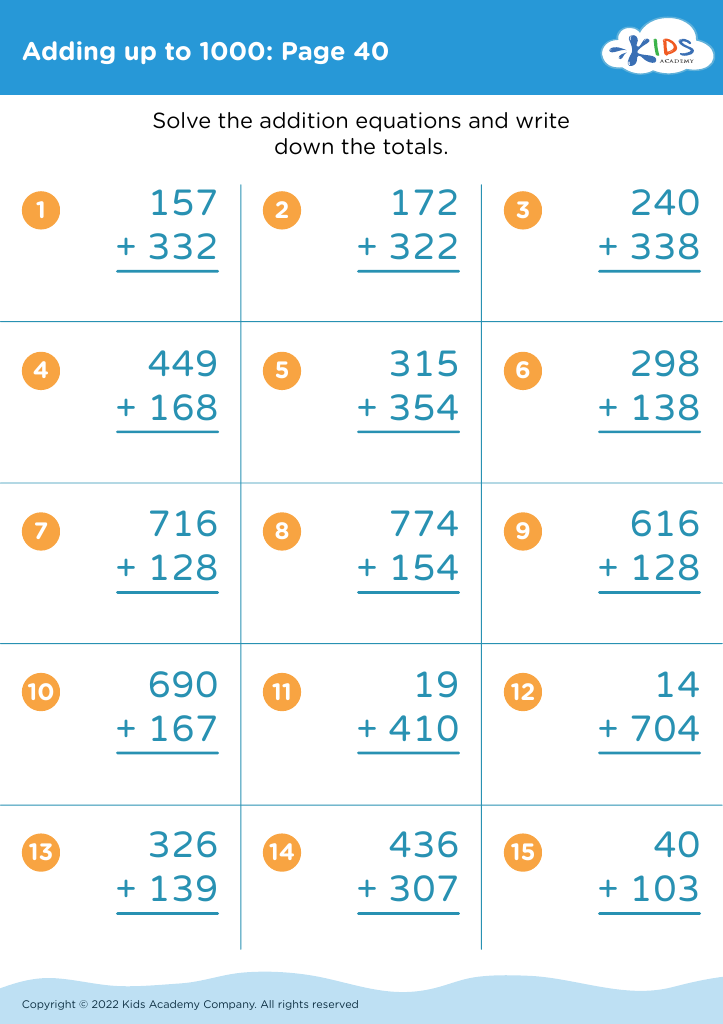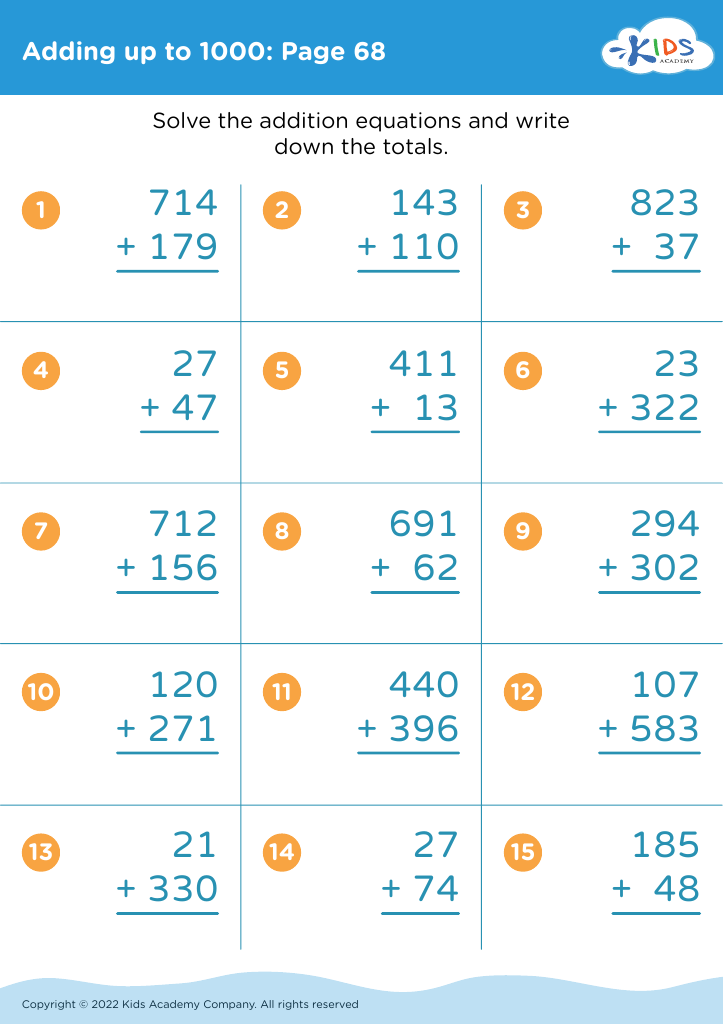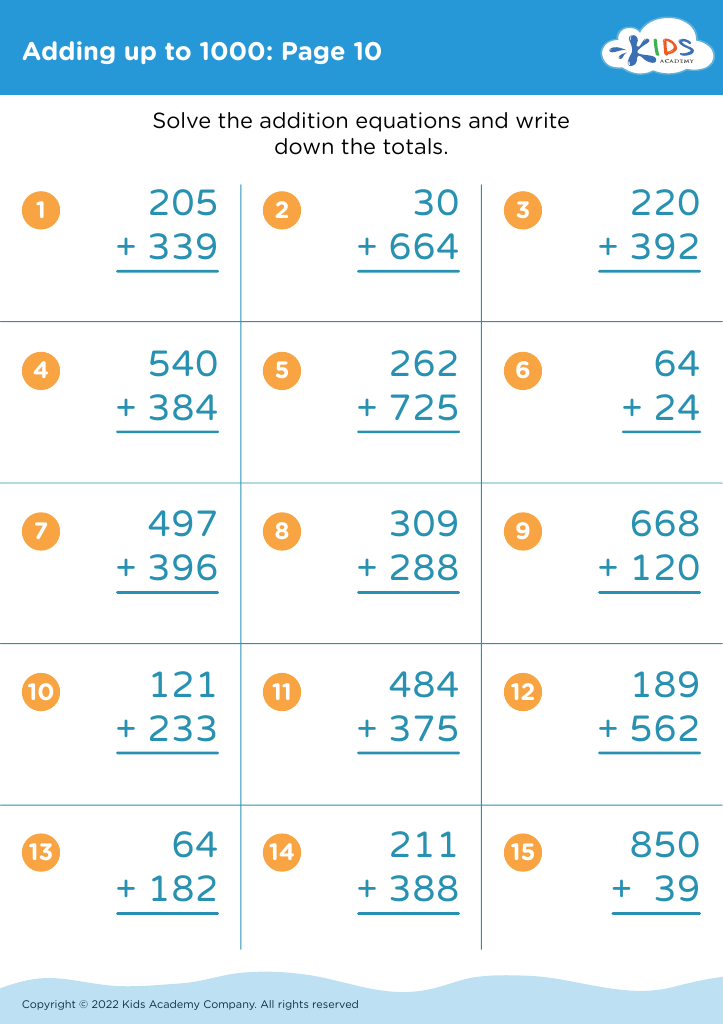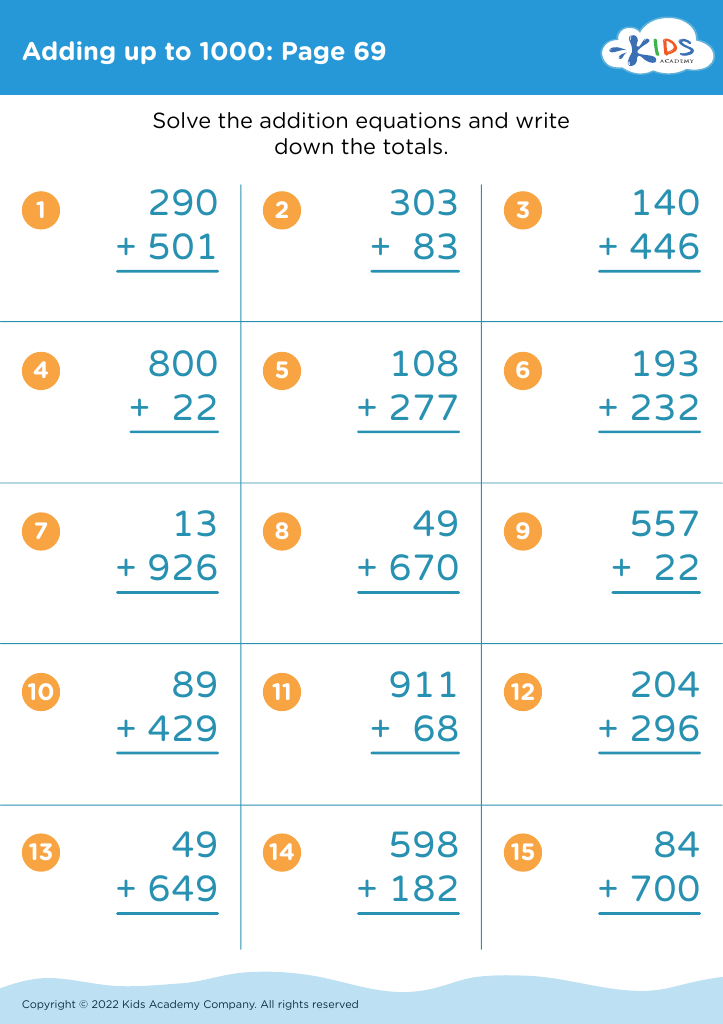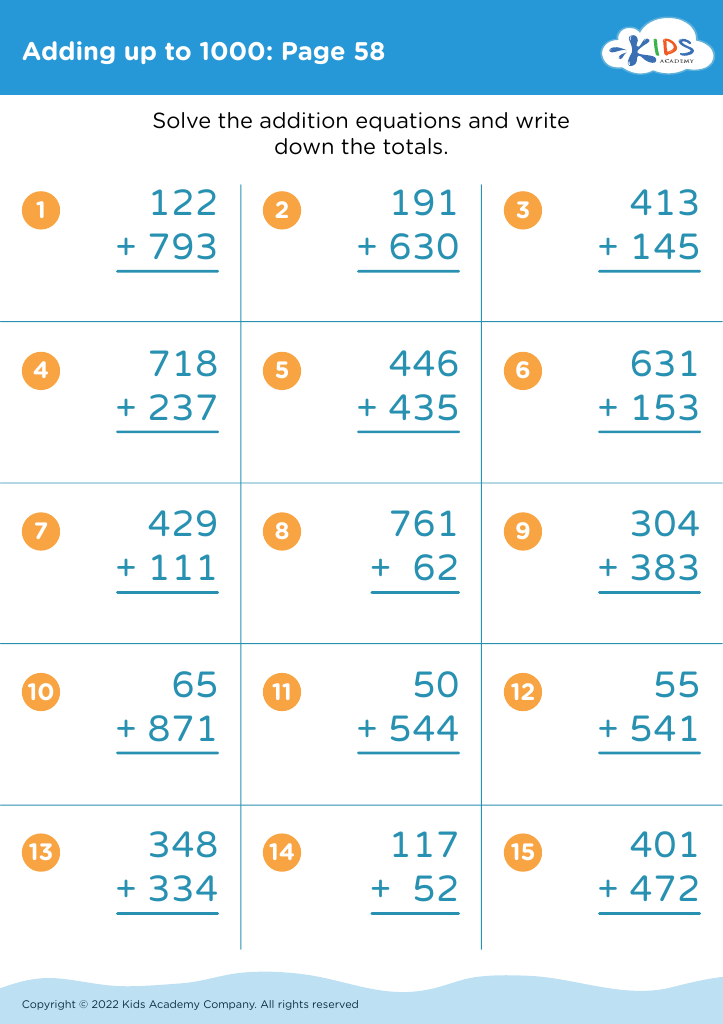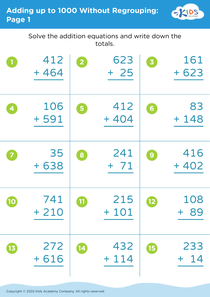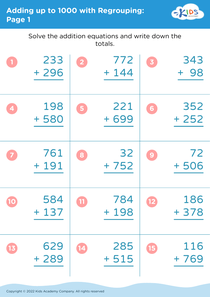Comparing Fractions Adding up to 1000 Misc Worksheets for Ages 5-8
5 filtered results
-
From - To
Explore our engaging worksheet collection on "Comparing Fractions Adding up to 1000" tailored for children ages 5-8. Designed to foster foundational math skills, these worksheets simplify the process of comparing fractions, helping young learners grasp essential concepts in a fun and interactive way. Each worksheet encourages critical thinking and problem-solving through various activities that involve fractions that sum up to 1000. Perfect for both classroom and home learning, these resources support early grade educators in creating a vibrant learning environment. Give your child the tools to succeed in math with our thoughtfully designed worksheets that make learning about fractions enjoyable and effective!
Comparing fractions is a fundamental mathematical skill that helps young learners develop critical thinking and problem-solving abilities. For children aged 5-8, understanding how to compare fractions lays the groundwork for more complex concepts in mathematics, such as addition, subtraction, and even concepts related to ratios and percentages. When children grasp the idea of comparing fractions, it nurtures their ability to analyze relationships between numbers, which is crucial for everyday life situations, like cooking or shopping.
Adding up to 1000 can create a tangible context for children as they practice fractions. Working with larger numbers while comparing fractional parts allows them to visualize and understand the concept of part-to-whole relationships more effectively. This method encourages children to think creatively and develop strategies for solving problems that involve fractions.
Furthermore, fostering these skills in early education can enhance a child's confidence in mathematics, encouraging a positive attitude toward learning. For parents and teachers, highlighting the importance of comparing fractions provides an opportunity to signpost the relevance of mathematics in the real world, instilling a love for learning that can last a lifetime. Ultimately, equipping young learners with these foundational skills prepares them for future academic success.
